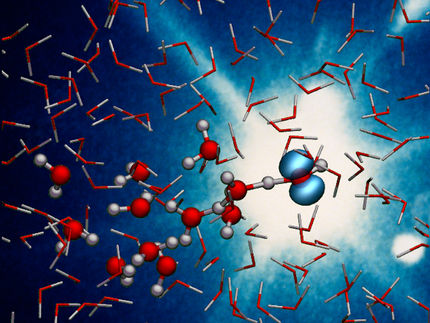CU-Boulder physicists use ultrafast lasers to create first tabletop X-ray device
An international research team led by the University of Colorado Boulder has generated the first laser-like beams of X-rays from a tabletop device, paving the way for major advances in many fields including medicine, biology and nanotechnology development.
For half a century, scientists have been trying to figure out how to build a cost-effective and reasonably sized X-ray laser that could, among other things, provide super-high-resolution imaging, according to Henry Kapteyn, a CU-Boulder physics professor and fellow at JILA, a joint institute of CU-Boulder and the National Institute of Standards and Technology. Such a device also could be used by scientists to peer into a single cell or chemical reaction to gain a better understanding of the nanoworld.
Most of today's X-ray lasers require so much power that they rely on facilities the size of football stadiums or larger, making their use impractical. To avoid the need for a large energy source to power an X-ray laser, the CU-Boulder researchers have created a tabletop device that uses atoms in a gas to efficiently combine more than 5,000 low-energy mid-infrared laser photons to generate each high-energy X-ray photon, said Margaret Murnane, a CU-Boulder physics professor and JILA fellow who is co-leading the research efforts.
"Because X-ray wavelengths are 1,000 times shorter than visible light and they penetrate materials, these coherent X-ray beams promise revolutionary new capabilities for understanding and controlling how the nanoworld works on its fundamental time and length scales," Murnane said. "Understanding the nanoworld is needed to design and optimize next-generation electronics, data and energy storage devices and medical diagnostics."
The findings appear in Science.
The tabletop device - an X-ray tube in the soft X-ray region - produces a bright, directed beam of X-rays by ensuring that all of the atoms in a multi-atmosphere pressure gas emit X-rays, according to Kapteyn.
"As an added advantage, the X-rays emerge as very short bursts of light that can capture the fastest processes in our physical world, including imaging the motions of electrons," Kapteyn said.
Laser beams, which are visible light, represent one of the best ways to concentrate energy and have been a huge benefit to society by enabling the Internet, DVD players, laser surgery and a host of other uses.
"However, the same revolution that happened for visible light sources that made it possible to create laser-like beams of light for widespread use instead of multidirectional light from a light bulb, is only now happening for X-rays," Kapteyn said.
Most read news
Other news from the department science

Get the chemical industry in your inbox
By submitting this form you agree that LUMITOS AG will send you the newsletter(s) selected above by email. Your data will not be passed on to third parties. Your data will be stored and processed in accordance with our data protection regulations. LUMITOS may contact you by email for the purpose of advertising or market and opinion surveys. You can revoke your consent at any time without giving reasons to LUMITOS AG, Ernst-Augustin-Str. 2, 12489 Berlin, Germany or by e-mail at revoke@lumitos.com with effect for the future. In addition, each email contains a link to unsubscribe from the corresponding newsletter.



























































